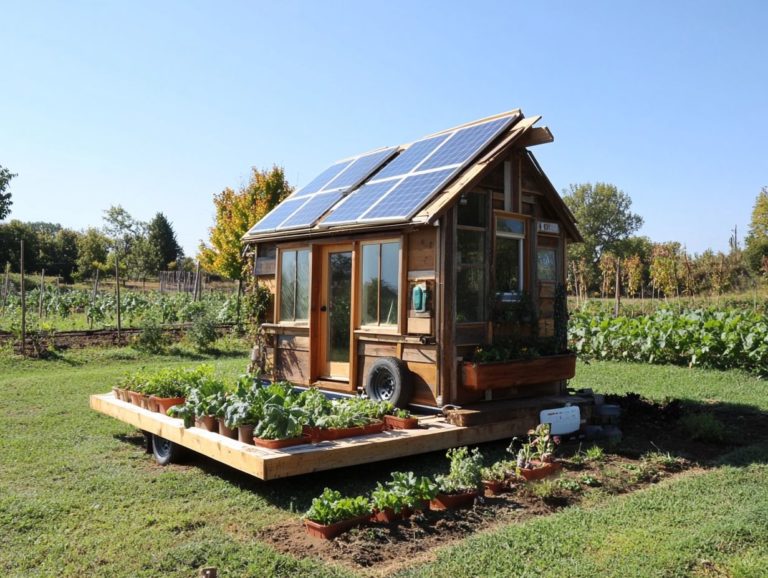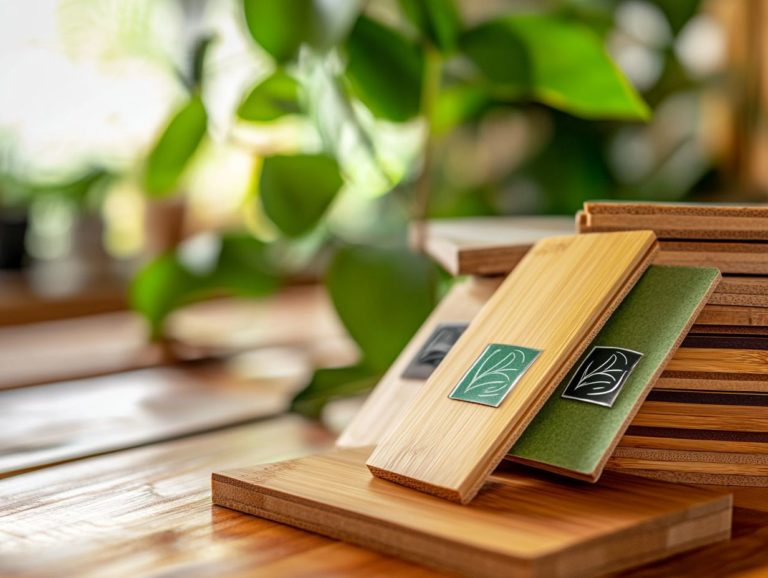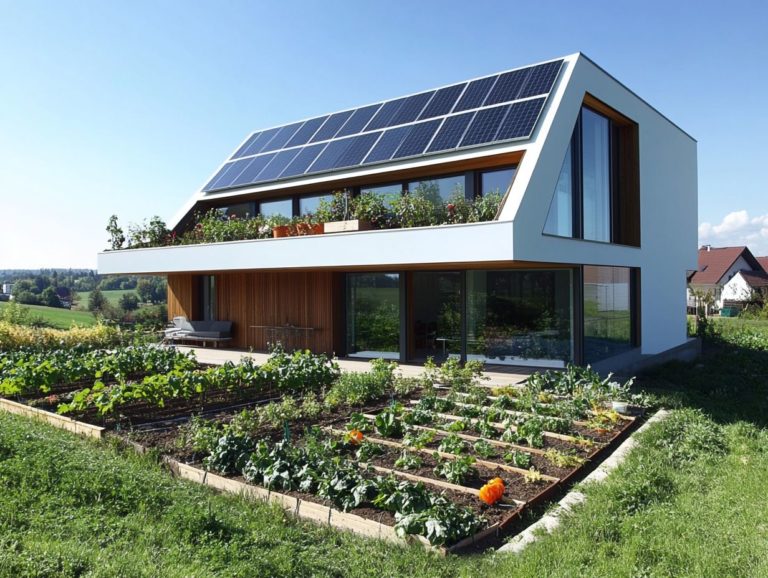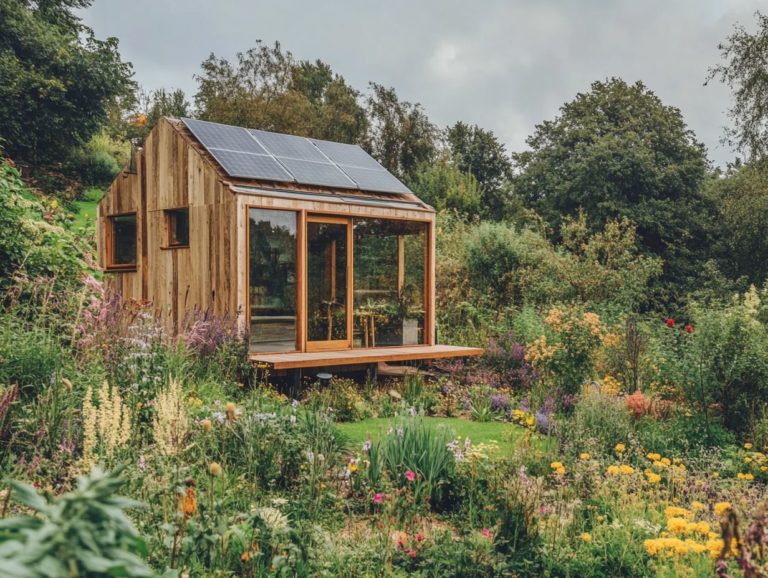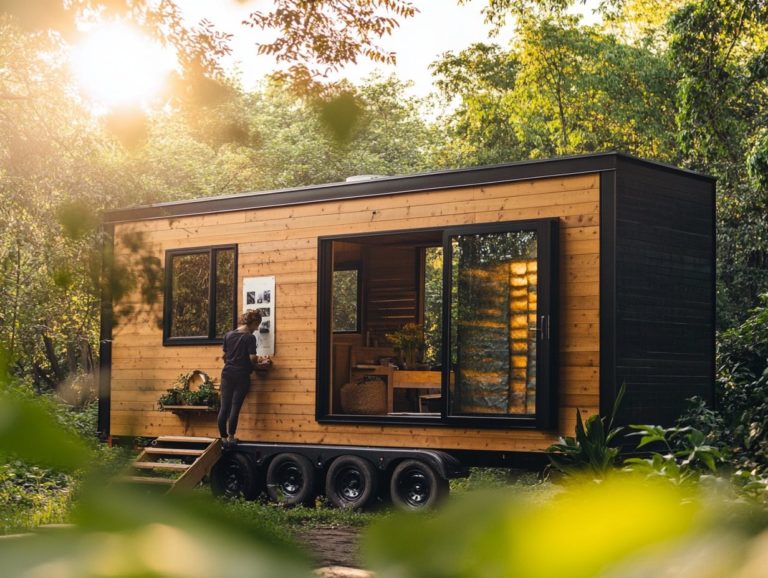Understanding Biodegradable Materials for Tiny Houses
In an age where sustainability is more crucial than ever, biodegradable materials have gained significant traction, particularly in tiny house construction. These eco-friendly alternatives not only help reduce waste but also resonate perfectly with the minimalist ethos of tiny living.
This article delves into the definition and characteristics of biodegradable materials, along with their environmental benefits. You’ll find useful types for your tiny home and key factors to consider when selecting them.
You ll also find tips for integrating these materials into your building process.
As you look toward the future of biodegradable materials in tiny house construction, we ll highlight potential advancements and innovations. Join us and discover the transformative power of biodegradable solutions in crafting sustainable living spaces.
Contents [hide]
- Key Takeaways:
- Discover the Power of Biodegradable Materials
- Benefits of Using Biodegradable Materials in Tiny Houses
- Types of Biodegradable Materials for Tiny Houses
- Considerations When Choosing Biodegradable Materials
- How to Incorporate Biodegradable Materials in Tiny House Construction
- The Future of Biodegradable Materials in Tiny House Building
- Frequently Asked Questions
- What are biodegradable materials and why are they important for tiny houses?
- What are some examples of biodegradable materials that can be used in tiny houses?
- How long does it take for biodegradable materials to break down?
- Are all biodegradable materials suitable for use in tiny houses?
- Why should you choose biodegradable materials for your tiny house?
- Do biodegradable materials cost more than traditional building materials?
Key Takeaways:
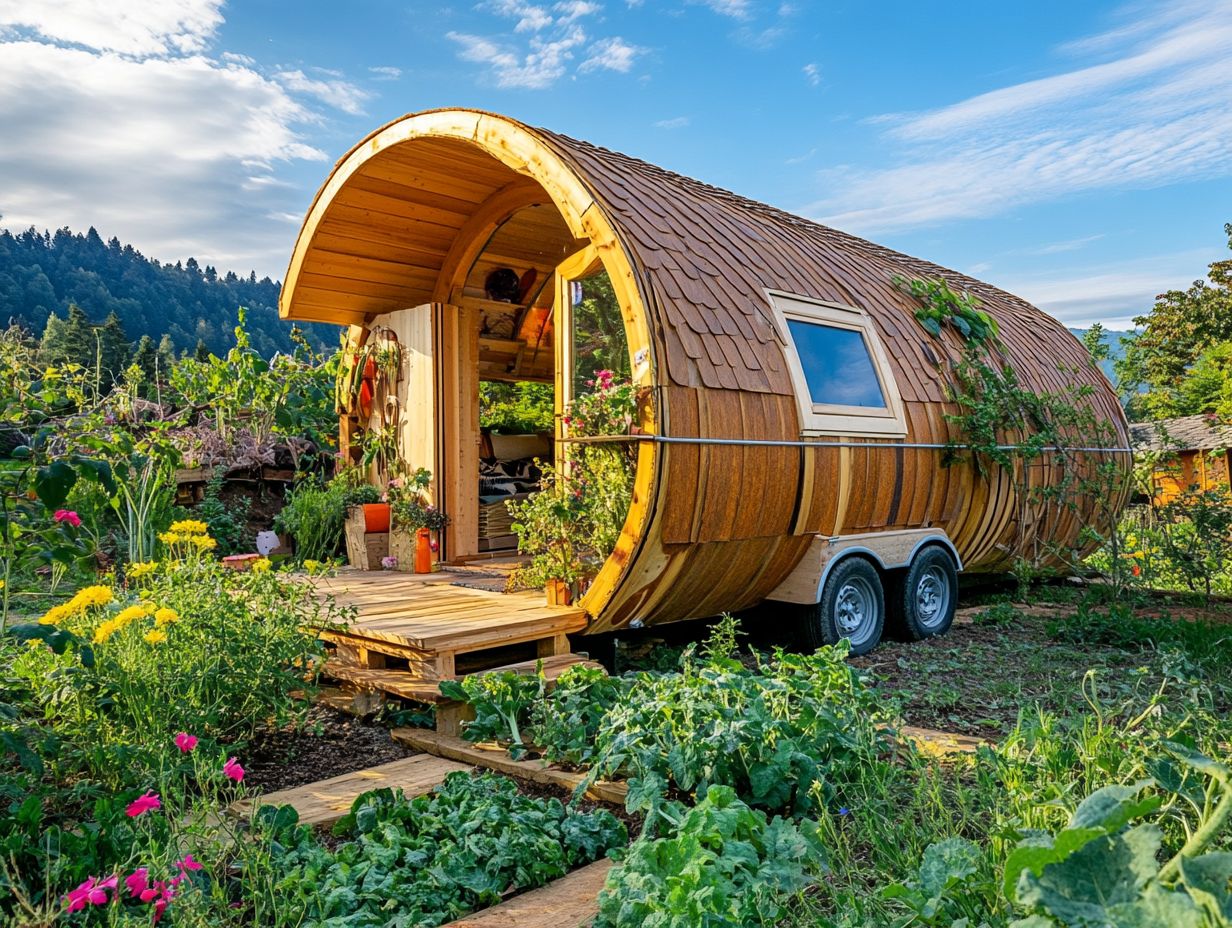
- Biodegradable materials can naturally break down and decompose into the environment without causing harm. They are organic, non-toxic, and sustainable.
- Using biodegradable materials in tiny house construction helps reduce carbon footprint, promotes environmental sustainability, and creates a healthier living space.
- When choosing biodegradable materials for tiny houses, consider factors such as cost, durability, and maintenance. It s essential to incorporate these materials properly into the construction process for optimal results.
Discover the Power of Biodegradable Materials
Biodegradable materials are substances that naturally decompose in the environment, playing a vital role in reducing your carbon footprint and promoting sustainable living practices.
Typically sourced from plants and animals, these materials provide eco-friendly alternatives to conventional options. By incorporating biodegradable materials into your life, you can minimize waste and elevate the sustainability of your lifestyle, seamlessly aligning with the principles of sustainable construction particularly in tiny houses and other eco-conscious designs.
Definition and Characteristics
Biodegradable materials break down into non-toxic components thanks to the work of tiny organisms called microbes. These materials often come from natural sources like plants and animals, making them essential to sustainable living practices.
Incorporating them into tiny house construction can transform your approach to eco-friendly building. Some materials might break down in just weeks during composting, while others could take months or even years, depending on environmental conditions.
By opting for biodegradable options, you can significantly reduce landfill waste and foster healthier ecosystems. This commitment to sustainability aligns with the growing trend toward more responsible living, highlighting the importance of using natural materials that work in harmony with the environment.
Benefits of Using Biodegradable Materials in Tiny Houses
Utilizing biodegradable materials in your tiny house construction presents numerous benefits that align perfectly with sustainable living practices. By choosing these materials, you can significantly reduce your carbon footprint and enhance the overall eco-friendliness of your home.
Not only do they minimize waste and lessen environmental impact, but they also foster a healthier living environment by promoting natural decomposition processes. Embracing this approach allows you to create a home that harmonizes with nature, reflecting your commitment to a sustainable lifestyle.
Start your journey toward a sustainable tiny home today!
Environmental Impact and Sustainability
The environmental impact of biodegradable materials is truly significant. They play a vital role in sustainability by dramatically reducing the carbon footprint linked to traditional building materials.
These materials minimize emissions and break down naturally when disposed of, without releasing harmful toxins into the environment. For those considering tiny house construction, opting for biodegradable options not only cuts down on waste but also beautifully complements a lifestyle focused on minimalism and ecological responsibility.
By implementing these materials, you can create homes that prioritize comfort and functionality while supporting the health of your surroundings. Choosing biodegradable products is an essential strategy for anyone eager to nurture sustainability in their living spaces and contribute positively to wider environmental practices.
Types of Biodegradable Materials for Tiny Houses
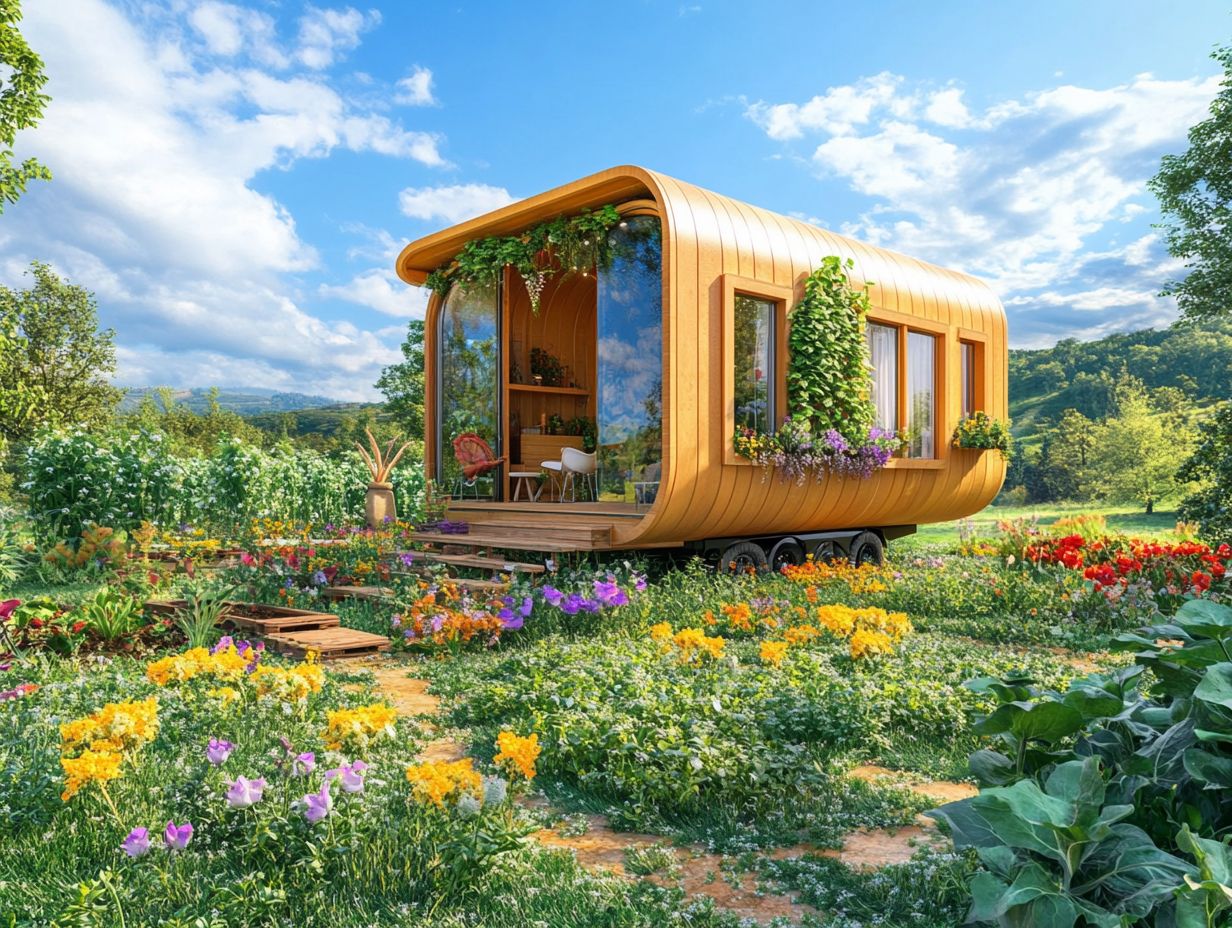
You ll find a diverse array of biodegradable materials perfect for tiny house construction, including both natural and synthetic options that champion sustainable living and eco-friendly practices.
Natural and Synthetic Options
Natural options for biodegradable materials include substances like reclaimed wood and bamboo. Synthetic options may encompass eco-friendly plastics designed to minimize environmental impact.
Understanding the distinctions between these two categories is essential. Natural materials offer unique aesthetic qualities and the ability to capture carbon, although they may require a bit more maintenance. In contrast, synthetic biodegradable materials can deliver consistent performance and durability but often depend on technological advancements for effective decomposition.
When it comes to tiny house designs, integrating these materials can significantly boost sustainability, allowing you to reduce your ecological footprint. For instance, reclaimed wood can create charming, rustic interiors, while eco-friendly plastics can be cleverly used in innovative fixtures that complement a modern zero-waste lifestyle, ensuring that every choice you make has a positive impact on the environment.
Considerations When Choosing Biodegradable Materials
When choosing biodegradable materials for your tiny house, it’s crucial to weigh factors like cost, durability, and maintenance needs. By making thoughtful choices, you can create a vibrant and sustainable living space that aligns with your values and lifestyle.
Cost, Durability, and Maintenance
When selecting biodegradable materials for your tiny house construction, it’s essential to weigh cost, durability, and maintenance carefully, as these factors significantly influence the project’s overall feasibility and long-term sustainability.
In terms of cost-effectiveness, consider the initial expenses compared to potential savings on energy bills down the line. For example, while a pricier insulation material might stretch your budget initially, its superior thermal efficiency could lead to lower heating costs, making it a savvy investment in the long run.
When evaluating durability, consider materials like bamboo or reclaimed wood, which not only offer aesthetic appeal but also withstand the elements. Maintenance needs are just as crucial; for instance, a natural plaster finish might require occasional touch-ups, while options like recycled metal siding could be low-maintenance.
These considerations will not only align with sustainable living principles but also resonate beautifully with the ethos of the tiny house movement, which celebrates smart, eco-friendly practices.
How to Incorporate Biodegradable Materials in Tiny House Construction
Incorporating biodegradable materials into your tiny house construction is entirely achievable through careful design choices and a steadfast commitment to sustainable living practices. This approach enhances the eco-friendliness of your space while ensuring it remains functional and harmonious with nature.
Start incorporating biodegradable materials today to make a lasting positive impact on our planet. You might also consider using recycled materials in tiny house designs as you explore your options and begin planning your tiny house project!
Tips and Techniques for Implementation
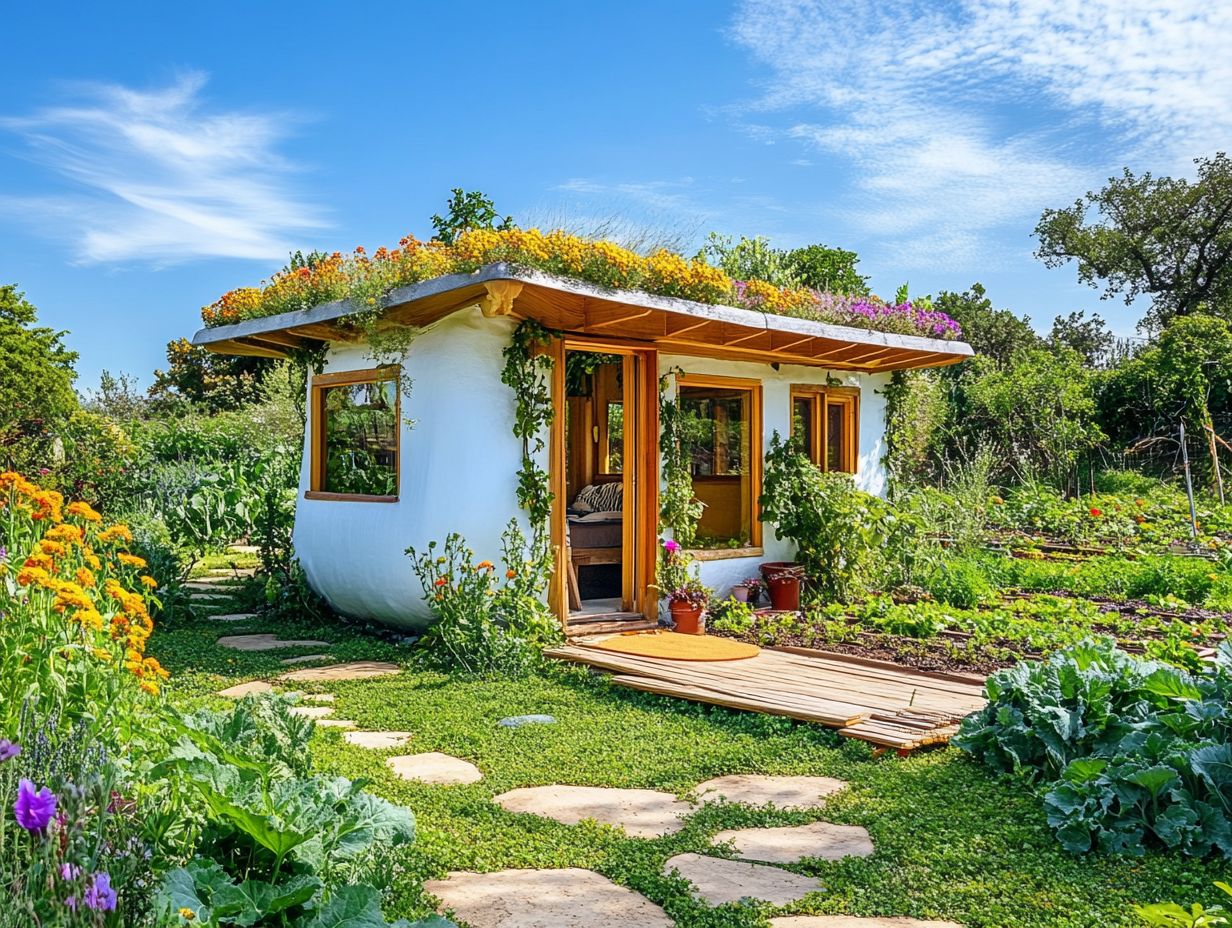
Employing effective tips and techniques for integrating biodegradable materials into your tiny house construction can lead to successful and sustainable outcomes. This approach enhances the environmental impact of your dwelling while embracing innovative design methods that resonate with nature.
By utilizing locally sourced materials, you can significantly reduce transportation emissions, contributing to environmental preservation. Exploring DIY methods gives you the power to customize your living space while fostering a deeper connection to the building process.
Incorporating compostable options like bamboo and straw bale enriches the sustainability aspect of your home. This transforms your shelter into a lifestyle rooted in environmental consciousness.
These strategies work together to cultivate a sense of community and enhance overall well-being. Making tiny house living an appealing choice for anyone seeking a more sustainable future.
The Future of Biodegradable Materials in Tiny House Building
The future of biodegradable materials in tiny house building is exciting and full of possibilities. Embracing these advancements can significantly enhance your sustainable living practices and reduce your environmental impact.
Potential Advancements and Innovations
Potential advancements in biodegradable materials have the capacity to revolutionize tiny house construction. They offer more effective, sustainable, and eco-friendly options.
These materials promise to minimize waste during the building process and create structures that enhance their surroundings. Integrating modern insulation technologies maximizes energy retention, allowing you to enjoy a more comfortable living environment while reducing energy costs.
The incorporation of smart technologies, like systems that help you track and reduce energy use, enables you to optimize resource usage. This ensures that every square foot of your tiny home is utilized to its fullest potential.
Together, these innovations lead to a remarkable reduction in carbon footprints. Sustainable living in tiny houses becomes a practical reality you can embrace.
Frequently Asked Questions
What are biodegradable materials and why are they important for tiny houses?
Biodegradable materials can be broken down by microorganisms into natural elements over time. They are essential for tiny houses because they are eco-friendly and help reduce waste and environmental impact.
What are some examples of biodegradable materials that can be used in tiny houses?
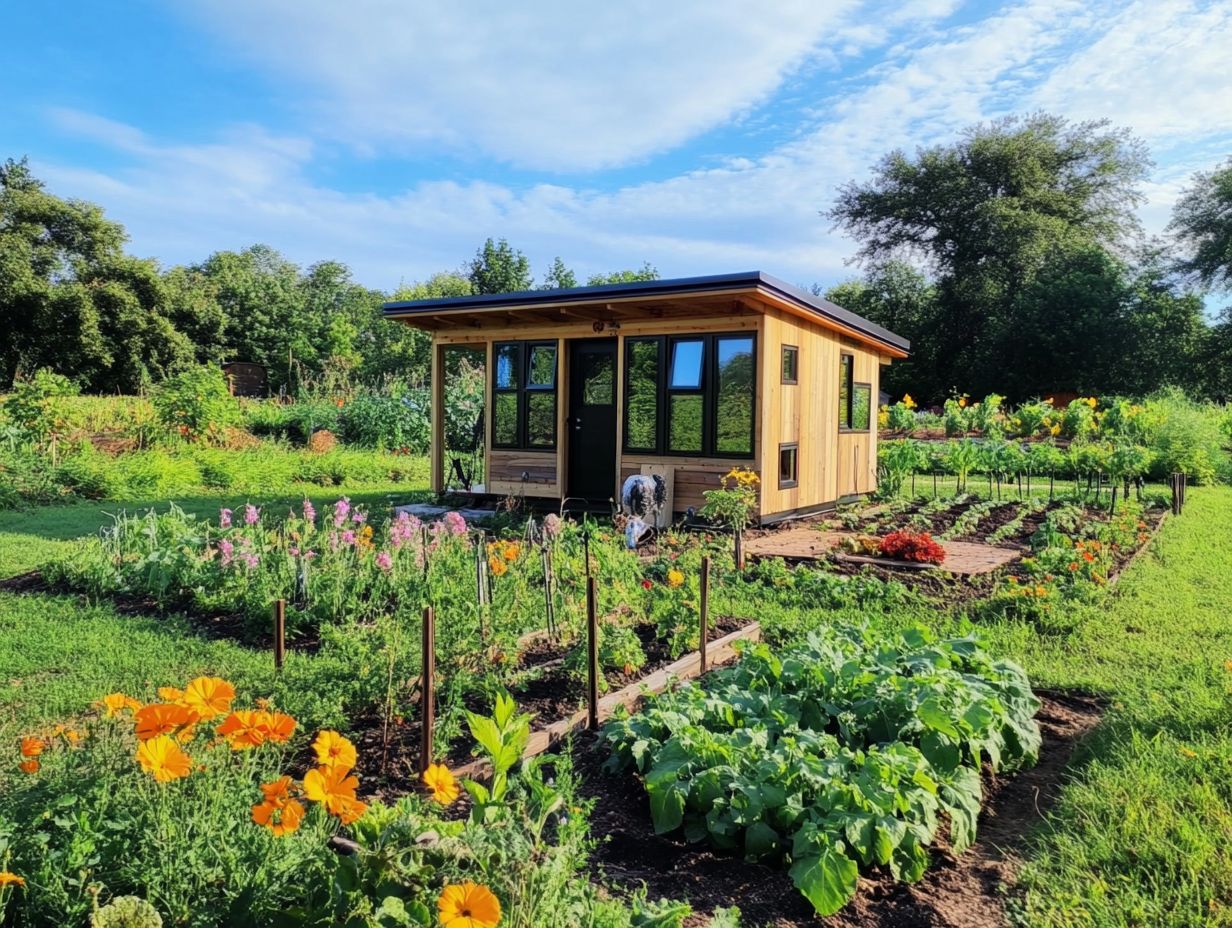
Examples include bamboo, cork, straw, and recycled paper products.
How long does it take for biodegradable materials to break down?
The time it takes for biodegradable materials to break down can vary based on the specific material and environmental conditions, ranging from a few weeks to several years.
Are all biodegradable materials suitable for use in tiny houses?
No, not all biodegradable materials are suitable for tiny houses. It’s crucial to consider the functionality and durability of the material, along with its biodegradability when making choices.
Why should you choose biodegradable materials for your tiny house?
Using biodegradable materials can help reduce the environmental impact of construction and living. They promote sustainability and create a healthier, eco-friendly living space.
Do biodegradable materials cost more than traditional building materials?
The cost of biodegradable materials can vary, but they may be slightly more expensive than traditional options. However, the long-term benefits and sustainability make them a cost-effective choice for tiny house construction.
Explore your options for using biodegradable materials today to make a positive impact on the environment!


